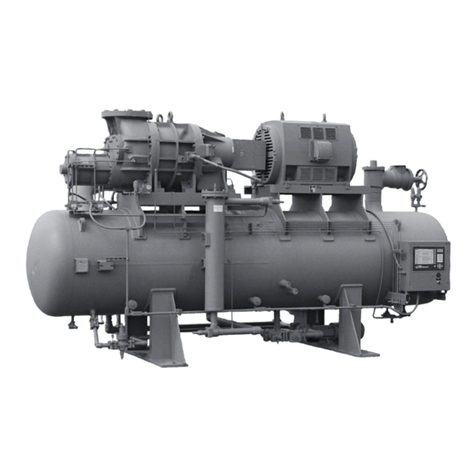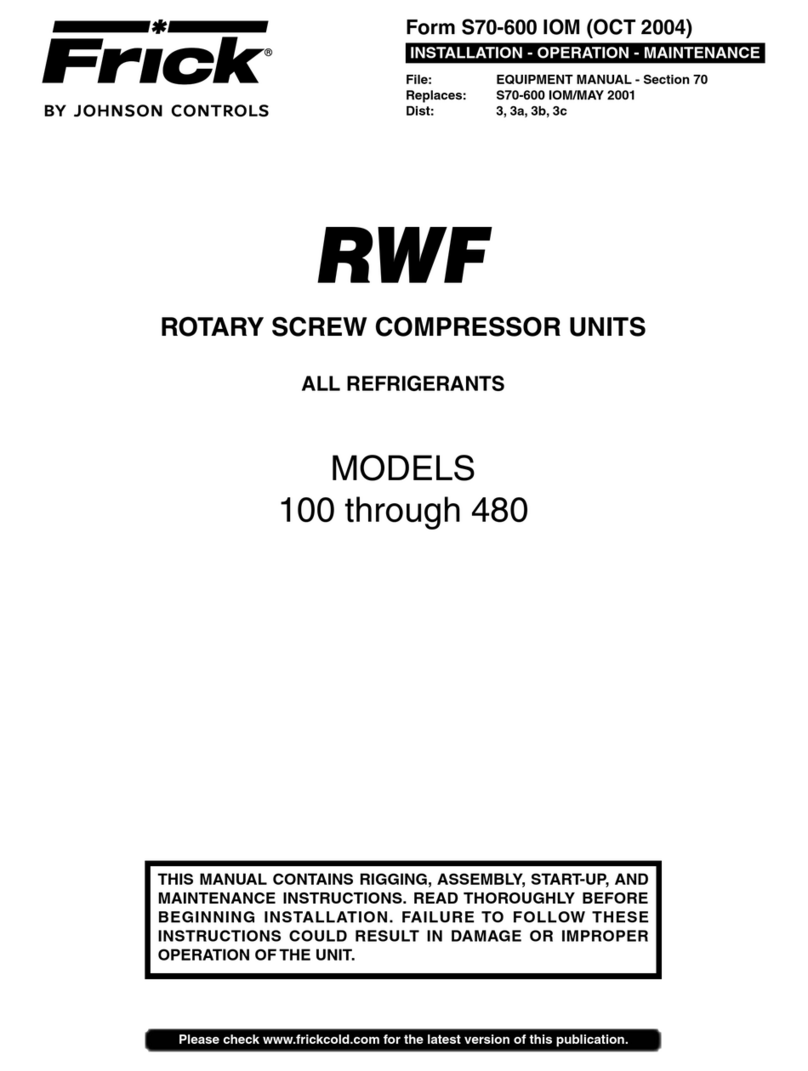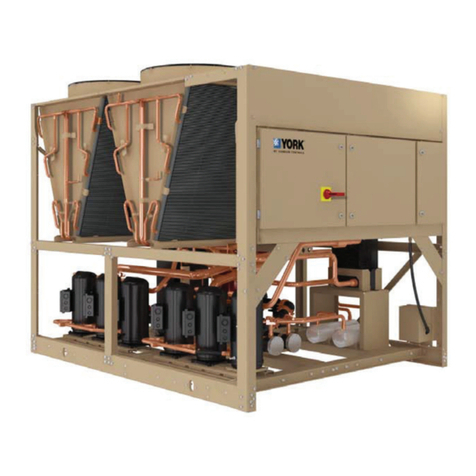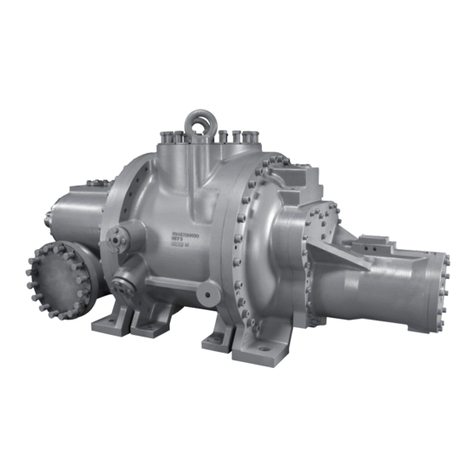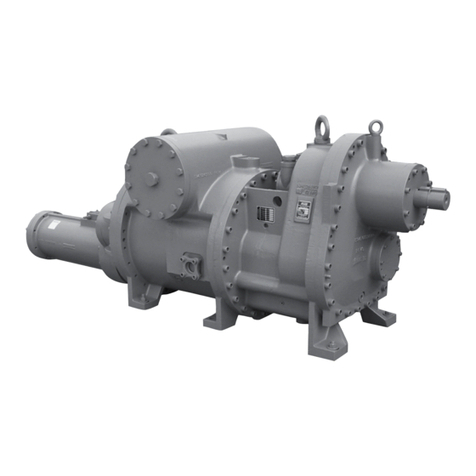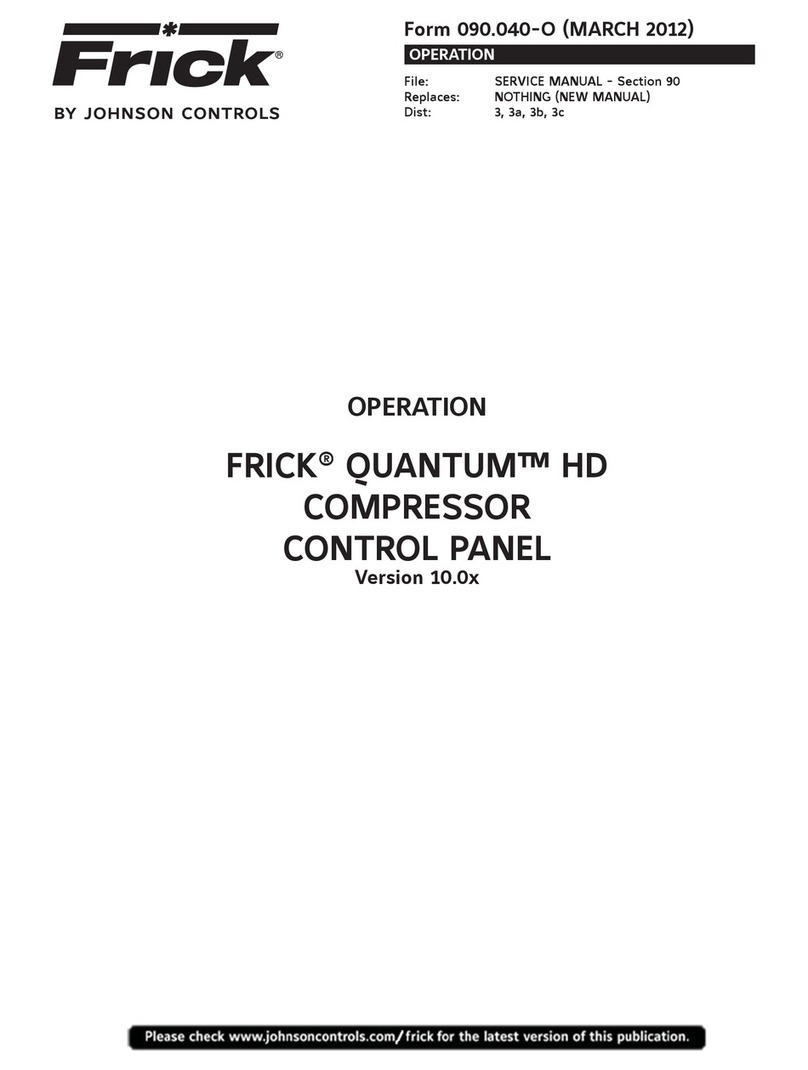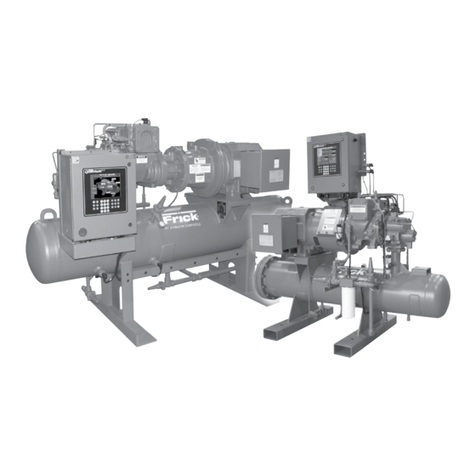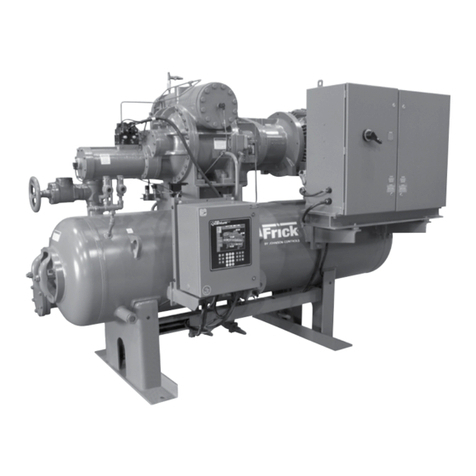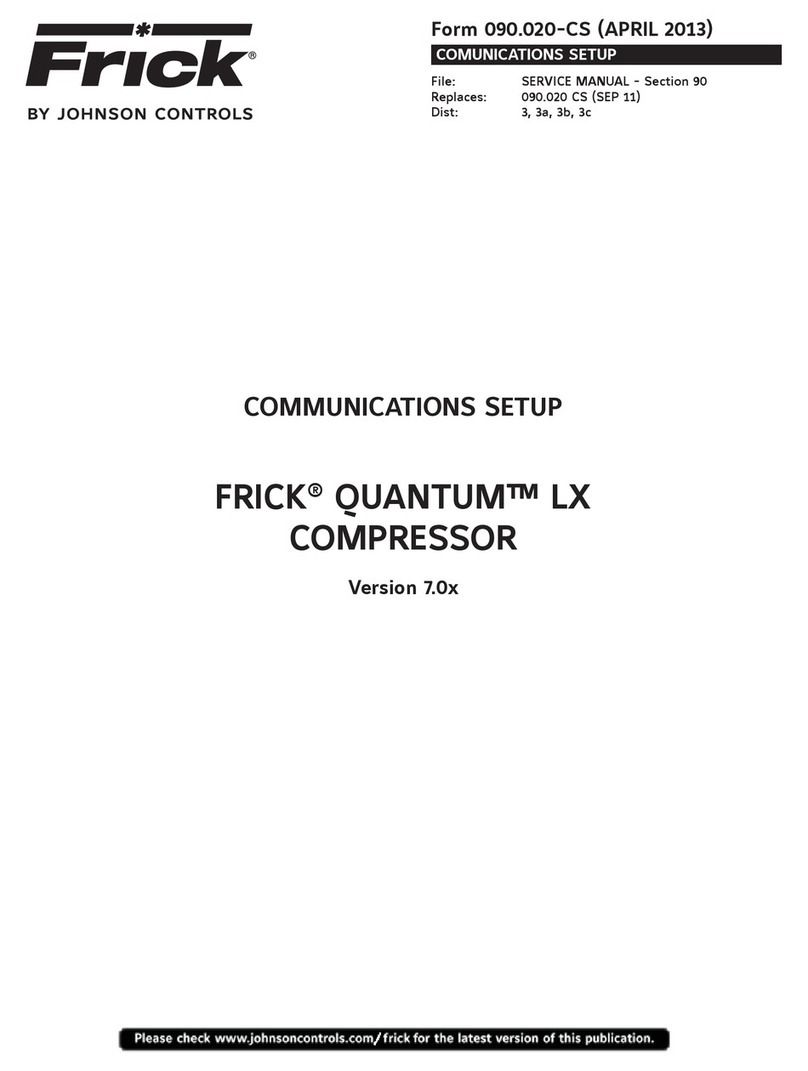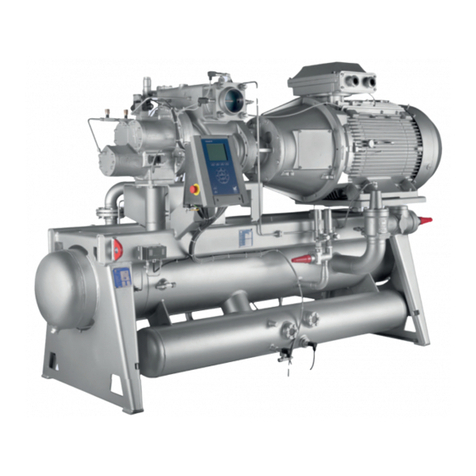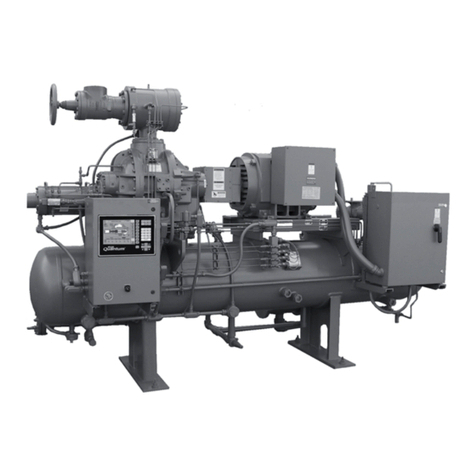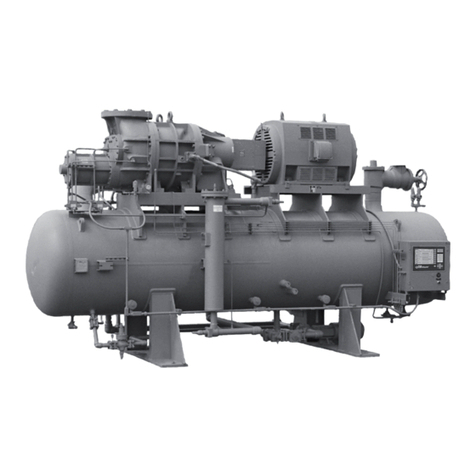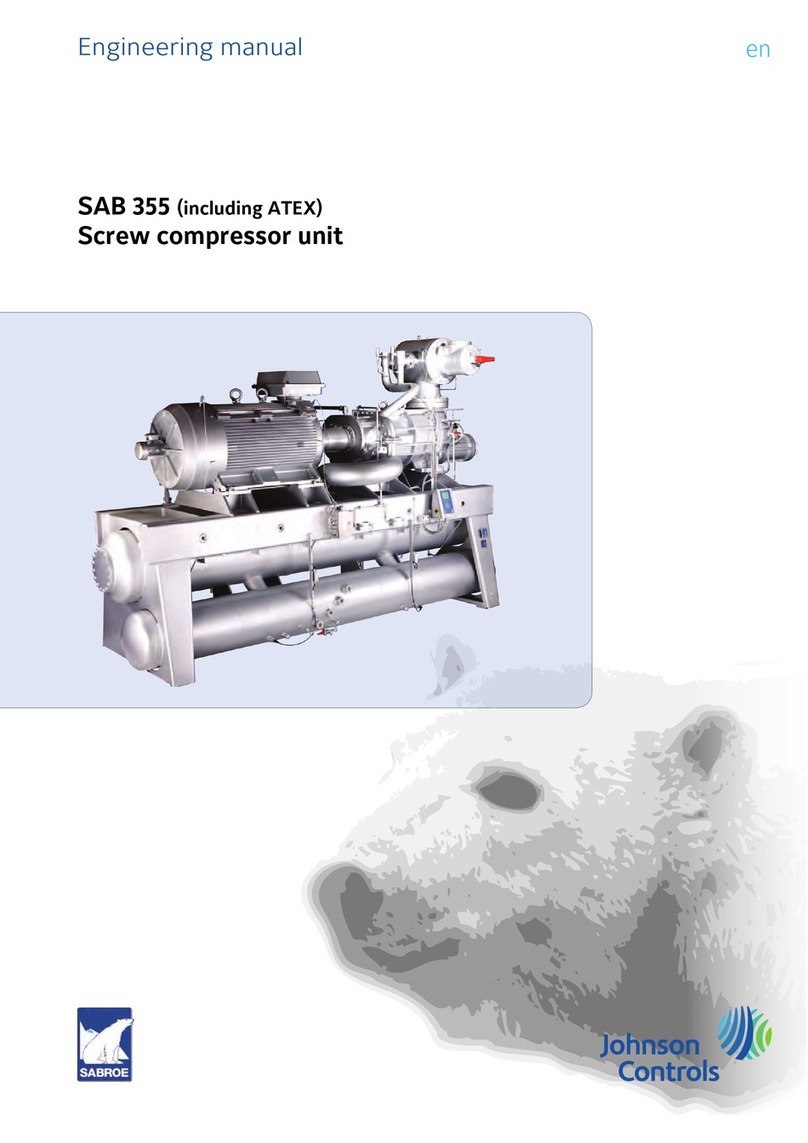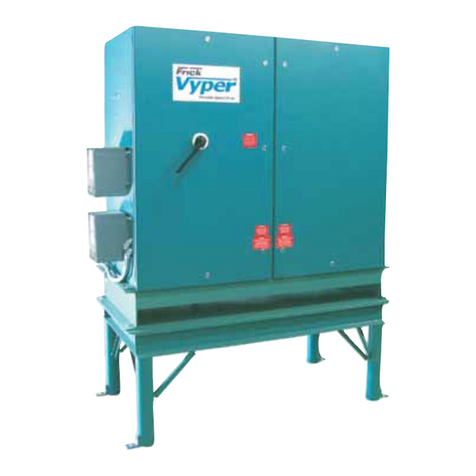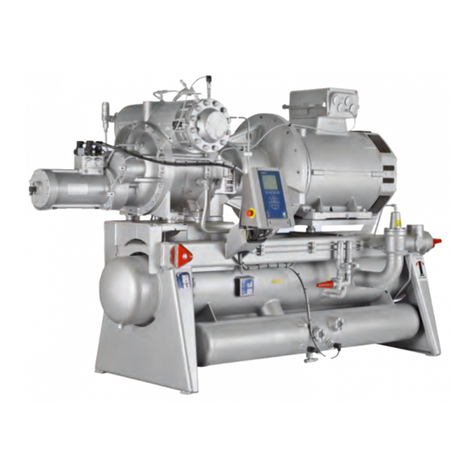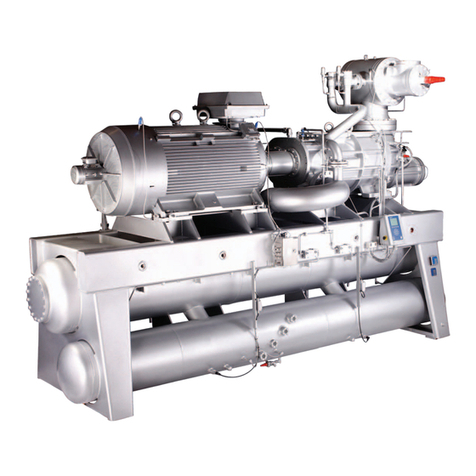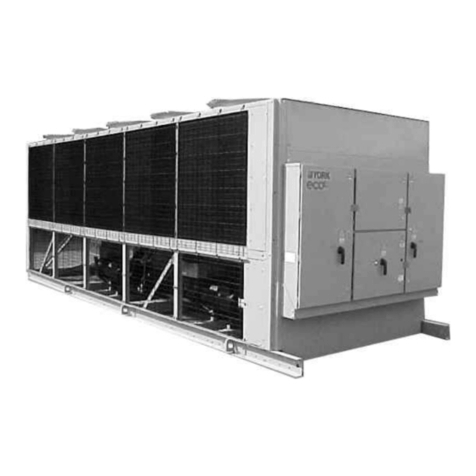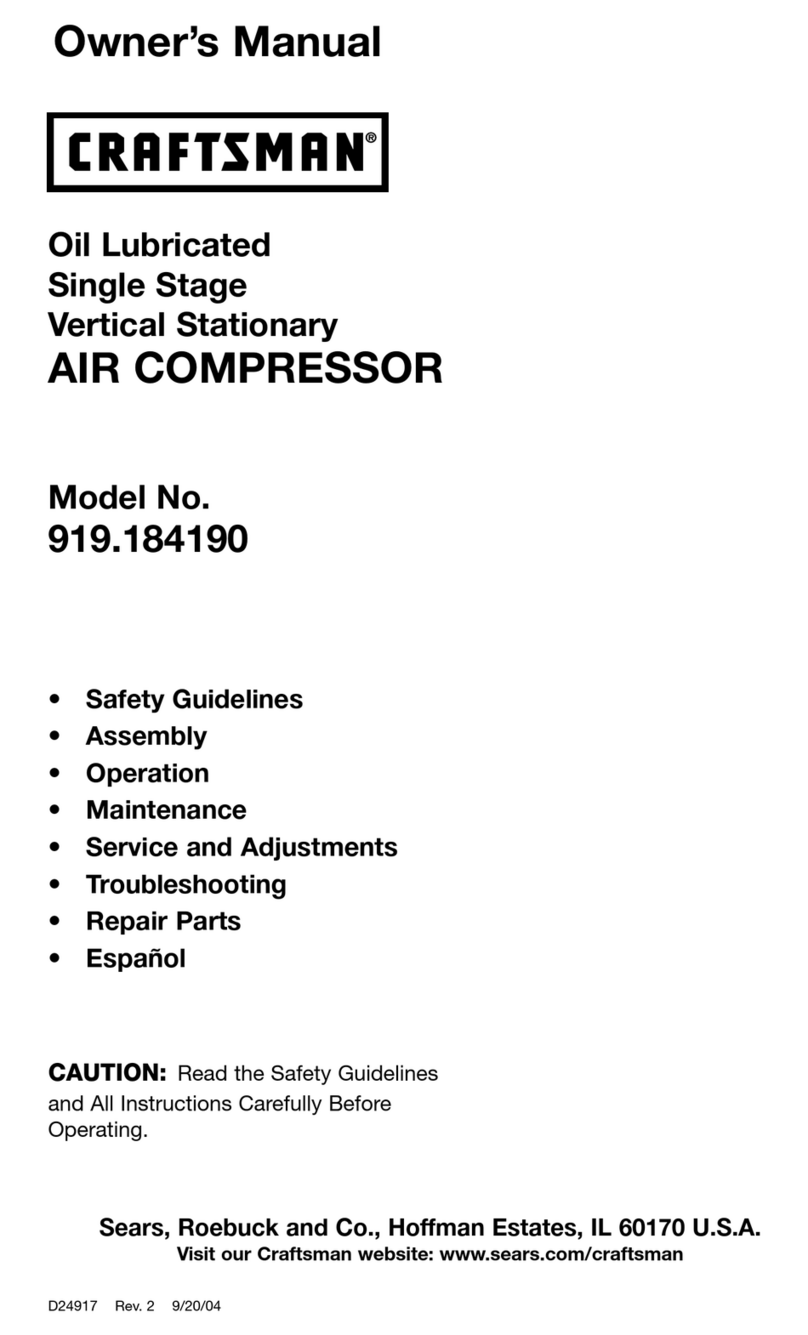
RXB PLUS ROTARY SCREW COMPRESSOR UNITS
INSTALLATION - OPERATION - MAINTENANCE
070.101-IOM (JAN 13)
Page 2
GENERAL INFORMATION
Preface .............................................................................. 3
Design Limitations ............................................................. 3
Job Inspection ................................................................... 3
Transit Damage Claims ..................................................... 3
Compressor/Unit Identification .......................................... 3
INSTALLATION
Foundation ......................................................................... 5
Handling and Moving ......................................................... 5
Skid Removal .................................................................... 6
Motor Mounting .................................................................. 6
Compressor/Motor Coupling Installation ........................... 6
Coupling Alignment Procedure .......................................... 7
Hot Alignment of Compressor/Motor ................................. 9
Checking Motor/Compressor Rotation .............................. 9
Holding Charge and Storage ............................................. 9
Compressor Oil .................................................................. 9
Oil Charge ......................................................................... 9
Oil Heater .......................................................................... 9
Liquid Injection Oil Cooling .............................................. 10
Dual Dip Tube Method ..................................................... 10
Level Control Method ....................................................... 10
Water-Cooled Oil Cooling ................................................ 10
Thermosyphon Oil Cooling .............................................. 11
Economizer - High Stage ................................................. 12
Electrical .......................................................................... 13
Motor Starter Package ..................................................... 14
Current Transformers (CT) Ratios ................................... 14
Minimum Burden Ratings ................................................ 14
Battery Backup ................................................................ 14
OPERATION
General Information ......................................................... 15
Microprocessor Control Panel ......................................... 15
Keys and Key Functions .................................................. 16
To Change The Adjustable Setpoints .............................. 18
How To Determine Adjustable Setpoints ......................... 18
Temperature-Pressure Control Program.......................... 22
Lead-Lag (Option) ........................................................... 24
Communications Troubleshooting .................................... 24
How The Microprocessor Works - Summary ................... 25
Multiple Compressor Sequencing .................................... 26
Microprocessor Telecommunications ............................... 27
Communications Protocol Specifications ........................ 27
RXB Compressor ............................................................. 30
Compressor Lubrication System ..................................... 30
Full-Lube Oil System ....................................................... 30
Compressor Oil Separation System ................................ 30
Compressor Hydraulic System ....................................... 31
Compressor Oil Cooling Systems .................................... 32
Single-Port Liquid Injection .............................................. 32
Dual-Port Liquid Injection ................................................ 33
Liquid Injection Adjustment Procedure ............................ 33
TABLE OF CONTENTS
Prestart Checklist ............................................................ 34
Initial Start-up Procedure ................................................. 35
Normal Start-up Procedure ............................................. 35
Restarting Unit After Power Failure ................................. 35
MAINTENANCE
Normal Maintenance Operations ..................................... 36
Compressor Shutdown and Start-up ............................... 36
General Instructions For Replacing
Compressor Unit Components ..................................... 36
Suction Check Valve Bypass Valve .................................. 36
Oil Filter, Single ............................................................... 36
Oil Filter, Dual .................................................................. 37
Strainer, Oil Return .......................................................... 37
Strainer, Oil Pump (Optional) ........................................... 37
Strainer, Liquid Injection .................................................. 37
Coalescer Filter Element ................................................. 38
Changing Oil .................................................................... 38
Recommended Maintenance Program ............................ 38
Vibration Analysis ............................................................ 39
Oil Quality and Analysis ................................................... 39
Motor Bearings ................................................................ 39
Operating Log .................................................................. 39
Maintenance Schedule .................................................... 40
Troubleshooting Guide ..................................................... 41
Abnormal Operation Analysis and Correction ................. 41
Troubleshooting The Microprocessor ............................... 42
EPROM Memory I/C Chip Replacement ......................... 45
SBC Board Replacement ................................................ 45
Microprocessor Display Replacement ............................. 45
Output Fuse Replacement ............................................... 45
Pressure Transducers - Testing ....................................... 45
Pressure Transducer Conversion Data ............................ 45
Pressure Transducers - Replacement ............................. 46
Volumizer Potentiometer - Replace/Adjust ...................... 47
Temperature/Pressure Adjustment .................................. 47
Bare Compressor Mounting ............................................. 47
Troubleshooting The RXB PLUS:
Compressor ................................................................. 48
Oil Separator System ................................................... 48
Hydraulic System ......................................................... 48
Full-Time Pump Systems ............................................. 49
Liquid Injection Oil Cooling .......................................... 49
Thermal Expansion Valves .............................................. 50
Temperature Control Valve .............................................. 50
P and I Diagrams ............................................................. 51
Micro Component Placement Diagram ............................ 54
Wiring Diagrams .............................................................. 55
PROPER INSTALLATION OF ELECTRONIC
EQUIPMENT ................................................................ 60
OPERATING LOG ........................................................... 65
